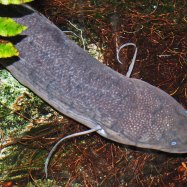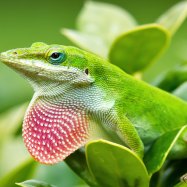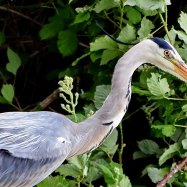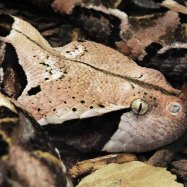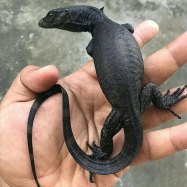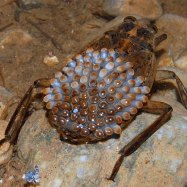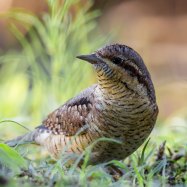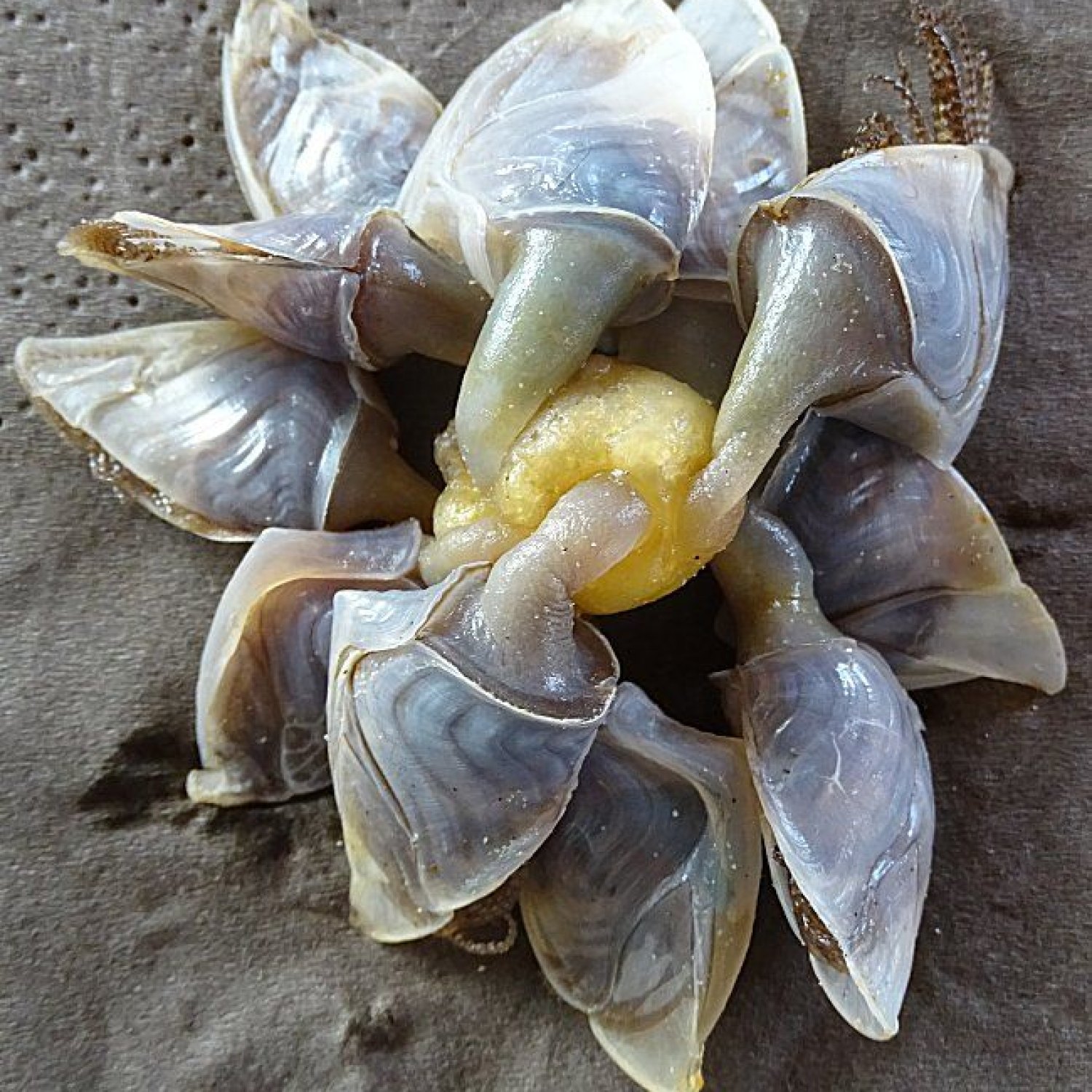
Barnacle
0.2 to 7 inches (0.5 to 18 cm)
Barnacles, commonly found in intertidal zones, may seem like simple creatures but they actually belong to the family Balanidae and have a distinct cone-shaped shell. Ranging from 0.2 to 7 inches in length, they can be found attached to rocks, docks, and other surfaces. Fascinating, right?
Animal Details Summary:
Common Name: Barnacle
Kingdom: Animalia
Habitat: Marine
The Mighty Barnacle: An Unsung Hero of the Ocean
In the vast expanse of the ocean, there is a creature that often goes unnoticed by the average observer. It may seem like just another shell clinging to the rocks and docks, but the barnacle is a unique and fascinating creature that plays a crucial role in the marine ecosystem.Scientifically known as Balanus, the barnacle is a type of crustacean that belongs to the Arthropoda phylum. Its classification as a crustacean may come as a surprise, as it does not resemble most of its fellow arthropods such as crabs and shrimps Barnacle. But upon closer inspection, one can see the small legs and jointed body that qualify it for this classification.
Barnacles are commonly found in marine environments all around the world, making them a truly global species. They have also adapted to various habitats within the ocean, including the intertidal zone, which is the area between high and low tide. Here, they can be found attached to rocks, docks, and even other animals such as sea turtles and whales.
One of the unique characteristics of barnacles is their feeding method. Unlike most crustaceans, they are filter feeders, meaning they obtain their nutrition by filtering small organisms and particles from the water. This is made possible by the tiny feathery appendages, called cirri, that they use to capture their food.
Being attached to a surface could seem like a disadvantage for some animals, but not for the barnacle. It can control the opening and closing of its shell, allowing it to maintain a flow of water and food to its position Blobfish. This is a particularly useful adaptation in areas with strong water currents.
The physical appearance of a barnacle is just as interesting as its feeding habits. They usually have a cone-shaped shell made of calcium carbonate, which offers protection from predators and the elements. The shell is also ribbed, allowing for the necessary expansion as the barnacle grows in size.
Speaking of size, barnacles can range from as small as 0.2 inches (0.5 cm) to a whopping 7 inches (18 cm). This variation in size can be attributed to the different species within the Balanus genus. Some species may even have a diameter of 10 inches (25 cm), making them one of the largest barnacles in the world.
Despite being tiny creatures, barnacles play a vital role in the marine ecosystem. They are known as ecosystem engineers, as they create a habitat for other marine organisms by attaching themselves to various surfaces. This creates a diverse and dynamic environment for other creatures to thrive in.
Barnacles are also crucial to the ocean's health as they act as natural filters. By consuming plankton and other particles from the water, they help maintain its cleanliness and balance. This is especially important in areas with high levels of nutrients and toxins, as barnacles can help remove them from the water.
Their presence in the intertidal zone is especially significant as it provides a food source for other creatures. During low tide, birds and even some fish can be seen feasting on the exposed barnacles, making them an essential part of the food chain.
Unfortunately, barnacles are facing various threats, both natural and human-induced. Climate change and ocean acidification can impact their shell formation and survival. Pollution and habitat destruction also pose a significant threat to their existence.
In some regions, barnacles are considered a pest, as their attachment to ships' hulls can cause damage and increase drag, slowing down vessels. This issue is often addressed by using antifouling paints or regularly cleaning the hulls. However, some studies have shown that barnacles' presence can actually increase fuel efficiency for ships.
Despite these challenges, barnacles continue to thrive and play an essential role in the ocean's health. Their resilience and adaptability make them truly remarkable creatures, often referred to as "nature's glue."
Looking closer at the characteristics of the barnacle, one can see why it is a fascinating creature. Its placement in the Arthropoda phylum may be surprising, but it only adds to their uniqueness. Their feeding method, physical appearance, and critical role in the marine ecosystem make them a species worth learning more about.
So, next time you come across a barnacle attached to a rock or dock, take a moment to appreciate and marvel at this unsung hero of the ocean. They may seem small and insignificant, but they are a crucial part of the intricate web of life in our oceans. Let's all do our part to protect and preserve these mighty creatures and the ocean that they call home.

Barnacle
Animal Details Barnacle - Scientific Name: Balanus
- Category: Animals B
- Scientific Name: Balanus
- Common Name: Barnacle
- Kingdom: Animalia
- Phylum: Arthropoda
- Class: Maxillopoda
- Order: Sessilia
- Family: Balanidae
- Habitat: Marine
- Feeding Method: Filter Feeder
- Geographical Distribution: Worldwide
- Country of Origin: N/A
- Location: Intertidal zone, attached to rocks, docks, and other surfaces
- Animal Coloration: Varies, but typically gray or brown
- Body Shape: Cone-shaped shell
- Length: 0.2 to 7 inches (0.5 to 18 cm)
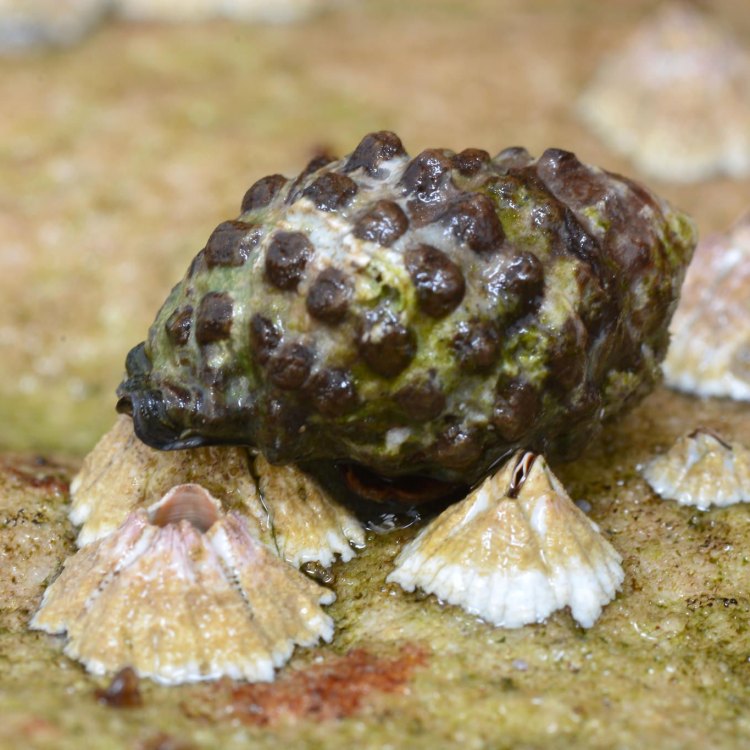
Barnacle
- Adult Size: 0.2 to 7 inches (0.5 to 18 cm)
- Average Lifespan: Up to 20 years
- Reproduction: Hermaphroditic (each individual has both male and female reproductive organs)
- Reproductive Behavior: Internal fertilization, release of larvae into the water
- Sound or Call: Does not make sounds
- Migration Pattern: Non-migratory
- Social Groups: Solitary
- Behavior: Sessile (attached to surfaces), opens and closes its shell to feed
- Threats: Predation, physical disturbance, pollution, climate change
- Conservation Status: Not evaluated (IUCN)
- Impact on Ecosystem: Provides habitat and food for other organisms
- Human Use: Edible, used as food and bait
- Distinctive Features: Shell with multiple plates, long feathery appendages (cirri) for filter feeding
- Interesting Facts: Barnacles have the longest penis to body size ratio of any animal group.
- Predator: Sea stars, snails, marine worms, fish
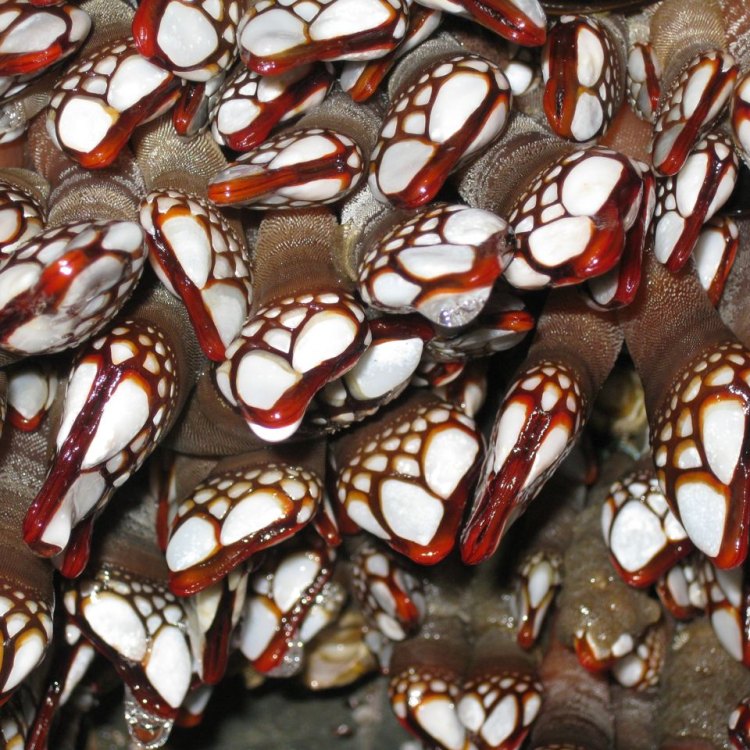
Balanus
Barnacles: The Hidden World of Sessile Marine Creatures
Imagine walking along a rocky shore and spotting clusters of small, shell-like creatures attached to the surface. You may have noticed them before but never took a second glance. These are barnacles, a fascinating group of marine invertebrates that often go unnoticed by humans. Despite their inconspicuous appearance, barnacles play a vital role in marine ecosystems and have some truly unique features PeaceOfAnimals.Com.Barnacles are found all over the world, with over 1,200 different species known to science. They can be found in various marine environments, from intertidal zones to deep-sea habitats. Let's dive deeper into the hidden world of barnacles and discover what makes them truly remarkable.
Size and Lifespan
Barnacles come in a wide range of sizes, from tiny specks to larger creatures measuring up to 7 inches (18 cm). On average, most barnacles fall between 0.2 to 2 inches (0.5 to 5 cm) in size. These small creatures may seem insignificant, but they have a surprisingly long lifespan. Barnacles can live up to 20 years, making them one of the longest-living marine invertebrates Butterfly Fish.
Reproduction and Behavior
One of the most fascinating features of barnacles is their unique reproductive behavior. Unlike most marine animals, barnacles are hermaphrodites, meaning each individual possesses both male and female reproductive organs. This allows them to self-fertilize if necessary but also engage in mating with other barnacles.
Barnacles reproduce through internal fertilization. The male and female reproductive organs are located in the base of the shell. During mating, the male barnacle extends its penis (which can be up to eight times its body size!) into the female reproductive opening and releases sperm. The fertilized eggs develop into larvae, which are then released into the surrounding water to find a suitable place to attach and begin their adult life.
Once a larva has found a suitable surface, it secretes a cement-like substance to firmly attach itself. From then on, it remains anchored to the surface, becoming sessile. This means that barnacles are unable to move freely and instead rely on their environment for food and water.
Threats and Conservation Status
While barnacles may not be able to roam freely, they are not without their own set of challenges. As sessile creatures, their primary threat is predation. Sea stars, snails, marine worms, and fish all feed on barnacles. However, barnacles have developed some defense mechanisms to protect themselves. Some species have thick or spiky shells, while others have chemical defenses to deter predators.
Physical disturbance is also a significant threat to barnacles. Human activities such as boat anchoring, diving, and coastal developments can damage their delicate shells and dislodge them from their habitat. Pollution and climate change can also have a severe impact on barnacles by affecting the quality of their environment and food sources.
Despite these threats, the conservation status of barnacles remains unassessed by the IUCN. This highlights the general lack of knowledge and research on these often overlooked creatures. It also means there is a significant need for further studies to understand their population and conservation needs.
Impact on Ecosystem and Human Use
While barnacles may face many challenges, they are essential components of marine ecosystems. As sessile creatures, they provide critical habitat for other organisms. Their shells create complex surfaces that offer shelter and protection for other marine animals, including small fish, snails, and crabs.
Barnacles are also proficient filter feeders. They have a unique feeding mechanism where they use their long, feathery appendages called cirri to capture plankton from the water. By doing so, they play a crucial role in maintaining a healthy marine food chain.
Humans have a long history of using barnacles for food and other purposes. In some cultures, they are considered a delicacy and are harvested for their edible meat. In addition, barnacles are used as bait in fishing, and their calcareous shells have been used in traditional Chinese medicine.
Distinctive Features and Interesting Facts
Despite being relatively simple in appearance, barnacles have some distinct features that set them apart from other marine creatures. Their shells are made up of multiple plates, creating a protective cover for their soft bodies. These plates are tightly sealed, but barnacles have to open and close them to feed, using specialized muscles.
One of the most interesting facts about barnacles is their reproductive system. As mentioned earlier, male barnacles have a ridiculously long penis compared to their body size. In fact, barnacles have the longest penis to body size ratio of any animal group. This adaptation allows them to reach and fertilize the female reproductive openings of other barnacles, even when they are in close proximity to each other.
Predators of Barnacles
Barnacles may seem like helpless creatures, but they do have a fair share of predators. Sea stars are one of their most ferocious predators, as they can pry open the barnacle's shell with their powerful arms. In areas with high sea star populations, barnacles have developed different defense mechanisms to prevent being devoured, such as thicker or elongated shells.
Snails and marine worms also pose a threat to barnacles. Snails have a similar feeding mechanism to barnacles, using a long, rasp-like tongue to scrape off barnacle tissue. Marine worms, on the other hand, burrow into barnacles' hard shells and eat their soft bodies.
Interestingly, some marine fish, such as the torpedo ray, have been known to use barnacles as camouflage to hide from predators. These clever fish cover their body with barnacles, making them look like a harmless, inanimate object.
Conclusion
Next time you visit a rocky shore, take a closer look at the small creatures attached to the surface. Barnacles may not be the most eye-catching, but they certainly have some incredible features that make them stand out. From their unique reproductive behavior to providing vital habitat and food for other organisms, these sessile creatures play a crucial role in marine ecosystems.
However, like many other marine species, barnacles face numerous threats. The lack of research and conservation efforts for these creatures is concerning, given their significant impact on the marine environment. It is essential to continue studying and protecting barnacles to ensure the balance and health of our oceans for years to come.
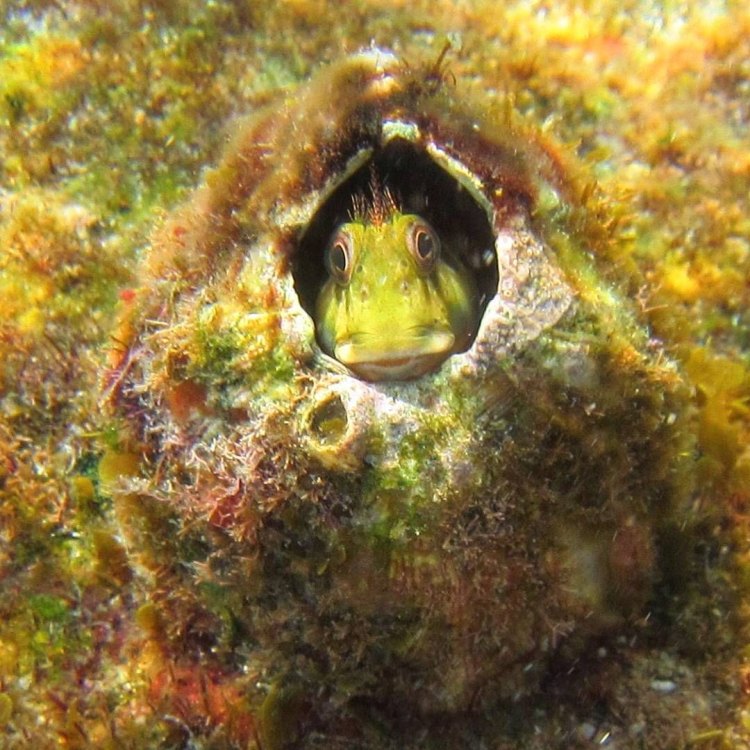
The Mighty Barnacle: An Unsung Hero of the Ocean
Disclaimer: The content provided is for informational purposes only. We cannot guarantee the accuracy of the information on this page 100%. All information provided here may change without prior notice.


